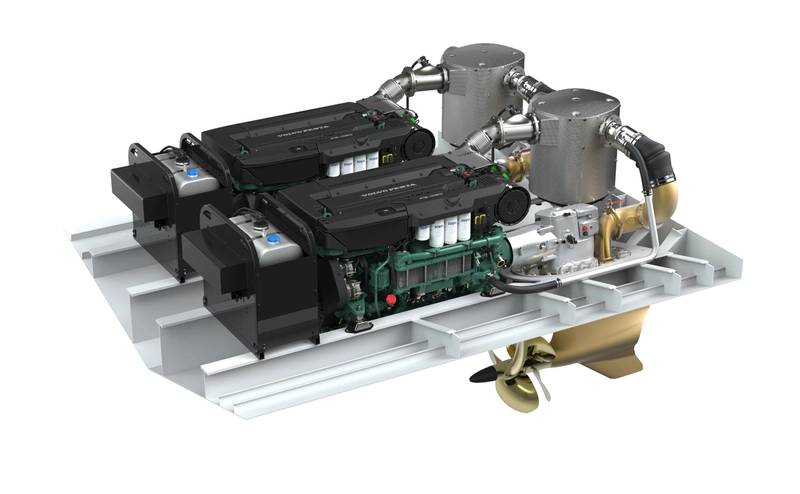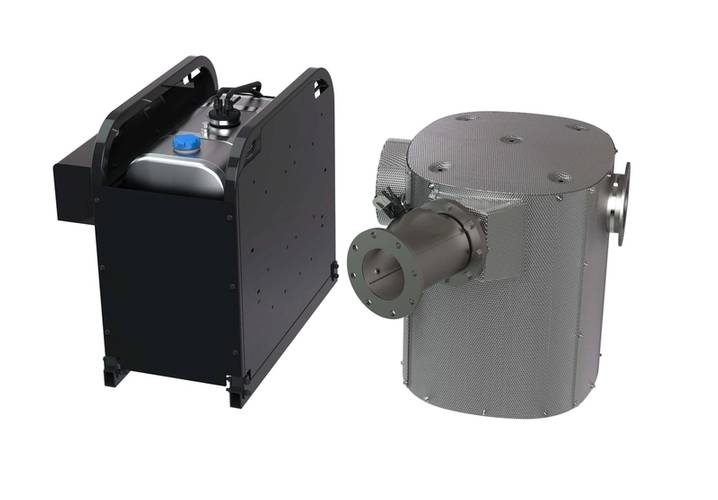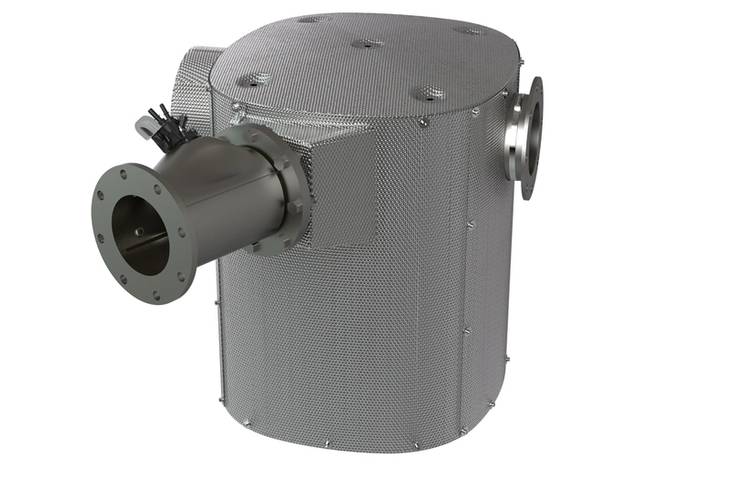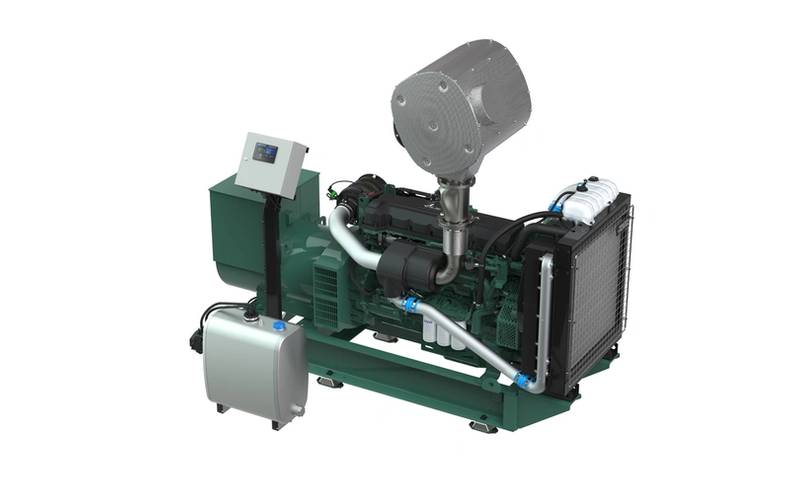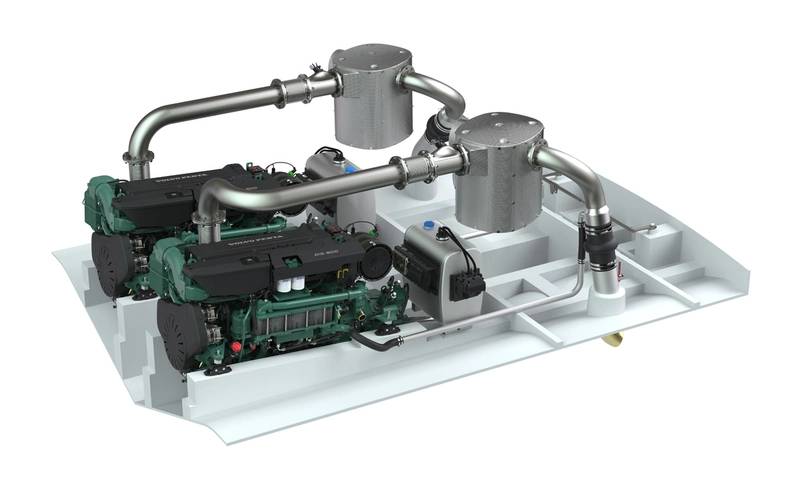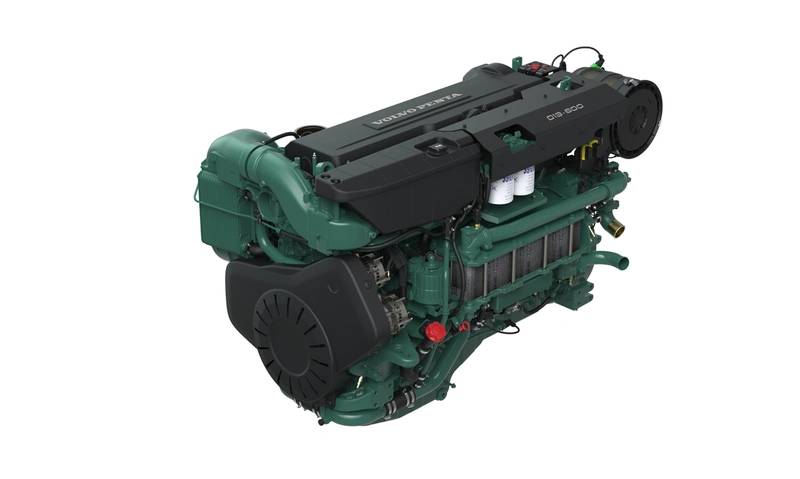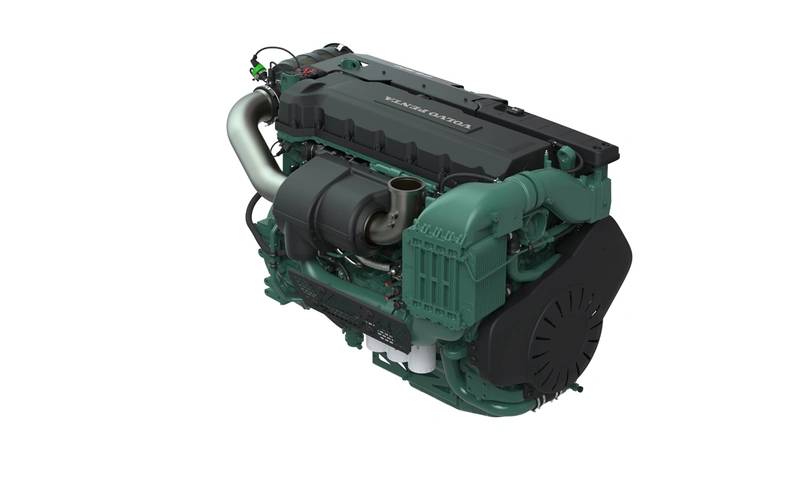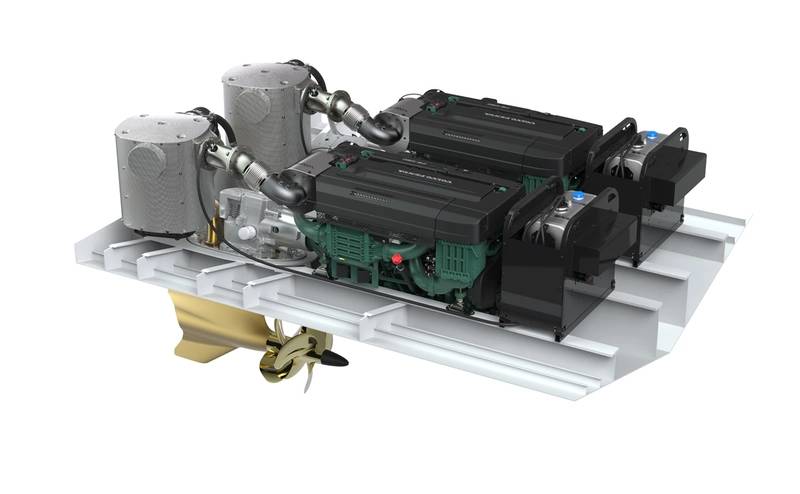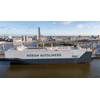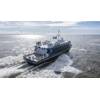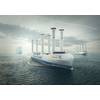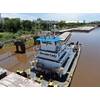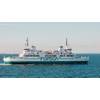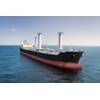Volvo Penta’s new IMO Tier III concept was revealed for the marine sector at the Nor-Shipping international exhibition and conference in Norway, ahead of further regulations coming into force in Europe.
Volvo Penta is launching a new engine and aftertreatment concept to comply with the forthcoming implementation of IMO Tier III standards, enabling a global solution for commercial marine operators. The solution is based on both the company’s own experience along with expertise from the Volvo Group in leading selective catalytic reduction (SCR) technology, resulting in a system that is dedicated to heavy-duty marine operations. New emissions restrictions for vessels entering the Baltic Sea and North Sea, will be implemented in 2021. The International Maritime Organization (IMO) Tier III regulation will stipulate a reduction in nitrogen oxides (NOx) emitted of around 70 percent – depending on engine size – when compared to current IMO Tier II levels.
“Our new concept is designed with features and components to withstand the toughest marine environments,” said Johan Carlsson, Volvo Penta’s chief technology officer. “In complying with IMO Tier III requirements, Volvo Penta will meet international emissions standards, offering a truly global solution.”
Volvo Penta’s solution for IMO Tier III is optimized for marine use, and uses SCR technology for the exhaust aftertreatment system.
“We’ve opted for the use of SCR because it keeps the engine working efficiently with optimized fuel consumption and keeps the power up to the right level,” said Thomas Lantz, product planning manager, marine commercial, at Volvo Penta. “SCR is the ideal solution for marine customers.”
The NOx Emission Control Area (NECA) for the Baltic Sea and North Sea follows the NOx designation by IMO for North American and Caribbean regions, and applies to most engines with an output of over 130kW. All of these areas are designated Sulfur Emission Control Areas (SECA) regulating maximum sulfur content in the fuel to 1,000 ppm.
Volvo Penta is initially launching its IMO Tier III solution for its 13-liter models as the range is used for a wide variety of marine applications. It will be available for inboard engines and the Volvo Penta Inboard Performance System (IPS) package (with a power output of 294-588 kW), auxiliary engines (ranging from 294-441 kW), and gensets (ranging from 300-400 kW). The reduction in NOx will go from current permitted levels of 7.7 g/kWh down to 2 g/kWh.
Volvo Penta said its IMO Tier III solution exceeds stipulated emissions limits in reducing NOx by up to 75 percent. It is a simple robust design, with an SCR solution that has been adapted and optimized for marine customers. Exhaust gases are mixed with UREA/DEF (diesel exhaust fluid) in the SCR unit. There is a separate UREA injector pipe. The two alternative exhaust outlets are designed for marine standards and will provide customers with different possible SCR configurations, leading to ease of installation. The DEF tank is designed to hold enough UREA for 3200 liters of fuel, and there are sensors to check the UREA levels and quality; it also includes a dosage pump and control unit. For Volvo Penta IPS, there are also specific features, such as the exhaust bend, to ensure ease of installation and operation.
Additional benefits of Volvo Penta’s IMO Tier III solution:
- Optimized for sulfur fuel up to 1,000 ppm.
- Ability to use either 32 percent or 40 percent urea.
- SCR acts a silencer to reduce noise by up to 35 dBA.
- 6-inch robust bolt flanges.
- Twin 6-inch outlets.
The IMO Tier III solution is a proven concept for tough marine conditions and will have undergone 20,000 hours of field-testing when it is launched in 2018. The engine has been developed to sustain high back pressure while also maintaining efficiency and drivability. Its twin six-inch outlets enable flexible and easy installation, and piping has also been increased to six inches. The engine will have the same footprint as current models, and the exhaust aftertreatment system works with both Volvo Penta’s Electronic Vessel Control (EVC) and Marine Commercial Control (MCC) systems.
“We’ve designed our solution to be compact and easy for customers to adapt to their own requirements,” Lantz added. “We offer one point of contact and there is no need for operators to apply for separate certification. We are providing a solution which is easy to install, easy to operate and easy to service.”
The installation of Volvo Penta IPS reduces fuel consumption and carbon dioxide emissions by up to 30 percent. Operators benefit from a 40 percent greater cruising range and 20 percent higher top speed. In addition, the full range of Volvo Penta’s engines are approved to use hydro-treated vegetable oil (HVO, a biofuel) which also reduces carbon dioxide emissions and particulate matter by up to 90 percent, compared to fossil fuels. The combination of Volvo Penta’s IPS package for IMO Tier III with the use of HVO offers another step forward in terms of sustainability.
• 









